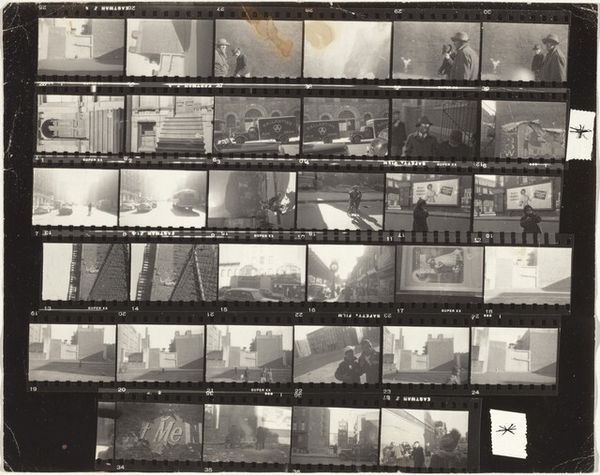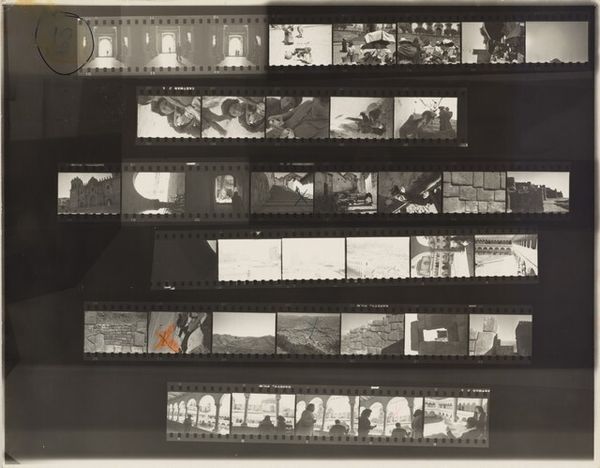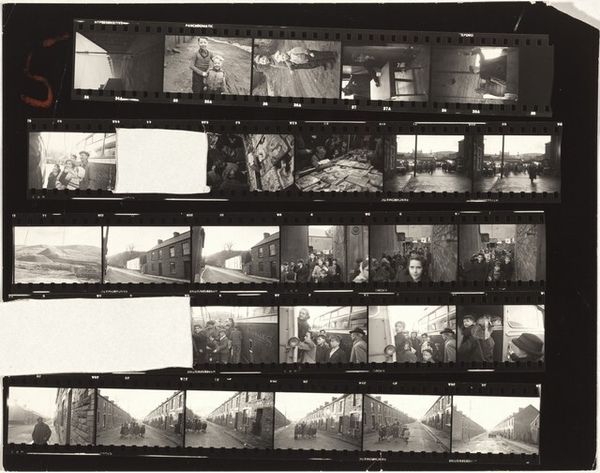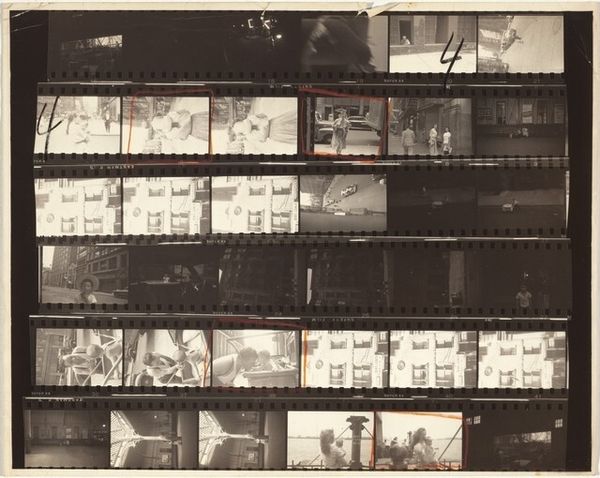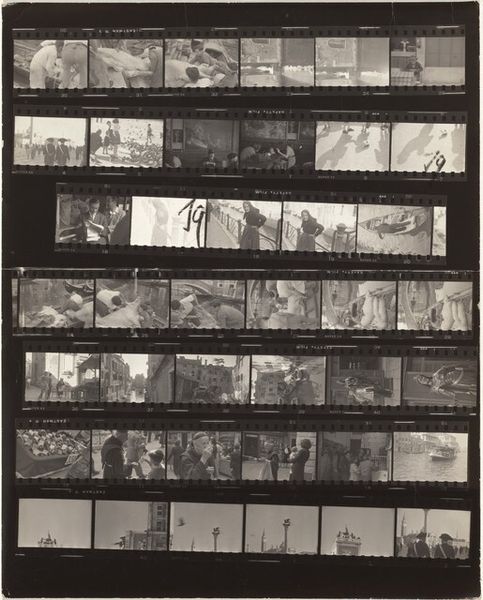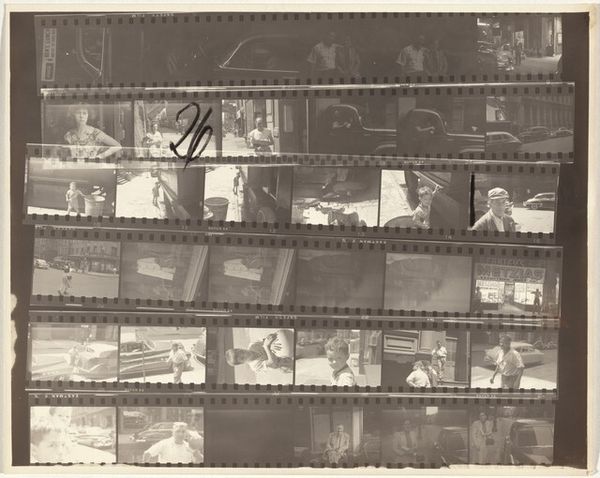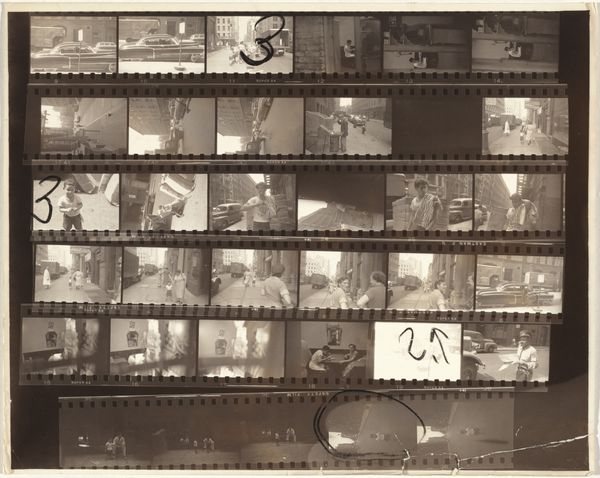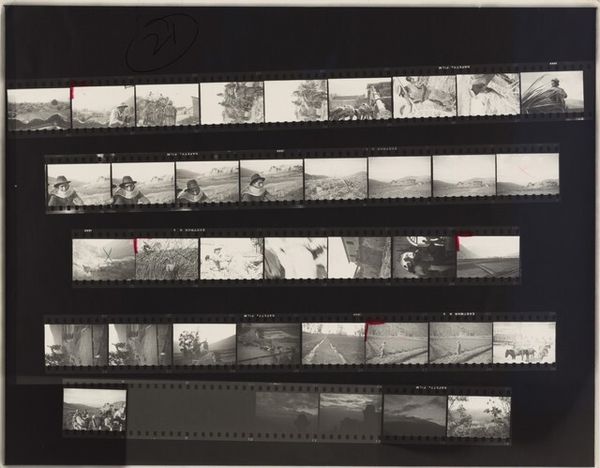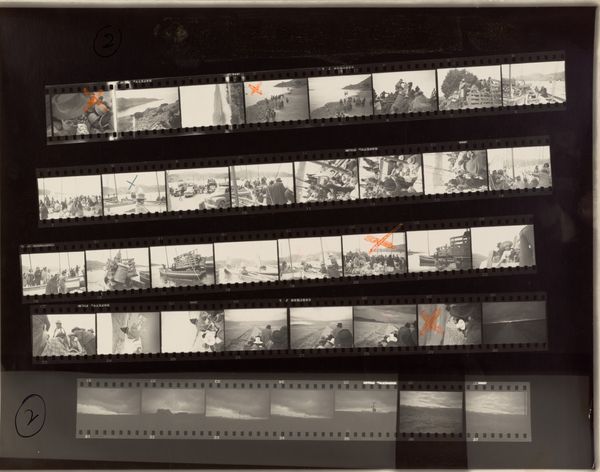
contact-print, photography
#
film photography
#
landscape
#
contact-print
#
archive photography
#
street-photography
#
photography
#
film
Dimensions: sheet: 27.8 x 35.4 cm (10 15/16 x 13 15/16 in.)
Copyright: National Gallery of Art: CC0 1.0
Editor: Here we have Robert Frank’s “Peru 36,” a contact print from 1948. The entire roll of film is visible. It has an almost diaristic quality… but what catches your eye when you look at this piece? Curator: Well, first, let’s consider Frank’s practice. He's known for his raw, unflinching style, a stark departure from the carefully staged photography of his time. Showing the whole roll like this emphasizes that sense of immediacy, but what’s its effect on *us*, do you think? Editor: It's almost like looking at his thought process, the choices he made on the fly. Like seeing a whole artist’s notebook. I wonder, why share all images and not select a few good ones? Curator: Exactly! Showing all images can be considered a deliberate artistic act that challenged the perceived authority and finality of the curated photograph. He pushes the idea of the photograph as an artifact, like this piece is revealing how imagery circulates and is shaped by cultural context. Is there one picture here that's more revealing than others, would you say? Editor: It's difficult to say! There are a few shots of landscapes and what seem like rural workers and local architecture. Perhaps, putting them all together, as a collection, offers an idea about a place or an event… Curator: And it also confronts viewers. We are invited to reflect on how social structures determine what's seen and unseen, isn't it? I find this piece compelling as it questions the whole mechanism of photographic truth and the selective process behind visual representation. Editor: That definitely changes my perspective on Frank’s methodology. He documented the scene and presented us the raw data to encourage analysis rather than accepting only what he felt was meaningful. Curator: Precisely. Frank makes a powerful statement about art, culture, and politics inherent in even seemingly neutral photographs. This makes the artwork not just an image, but an inquiry into power and seeing.
Comments
No comments
Be the first to comment and join the conversation on the ultimate creative platform.

